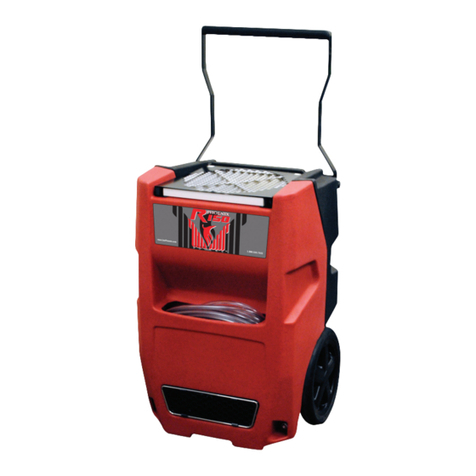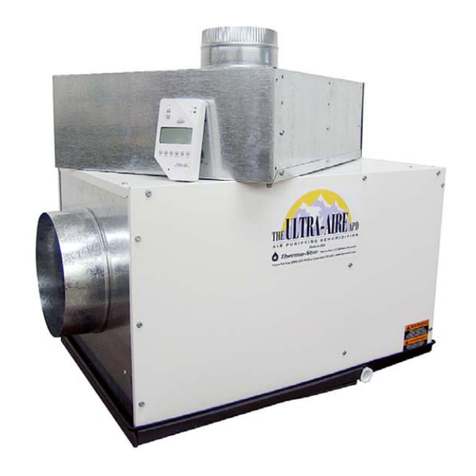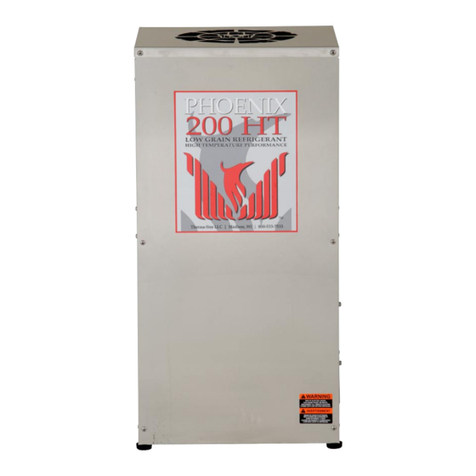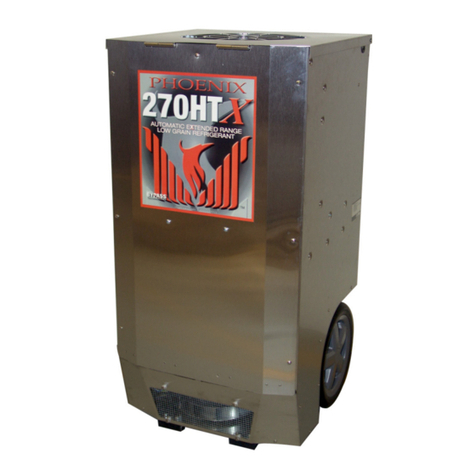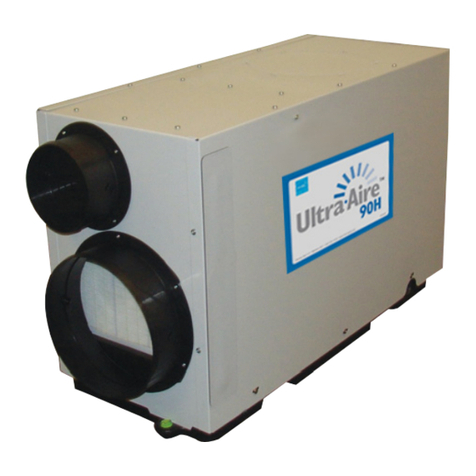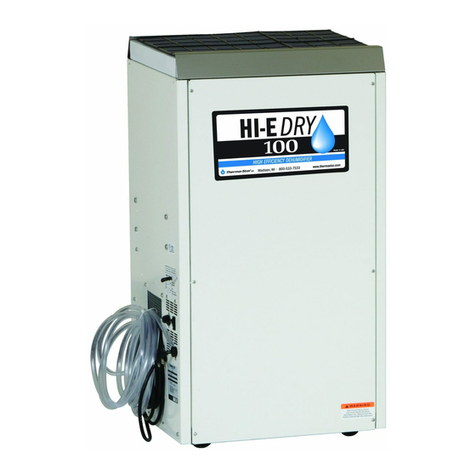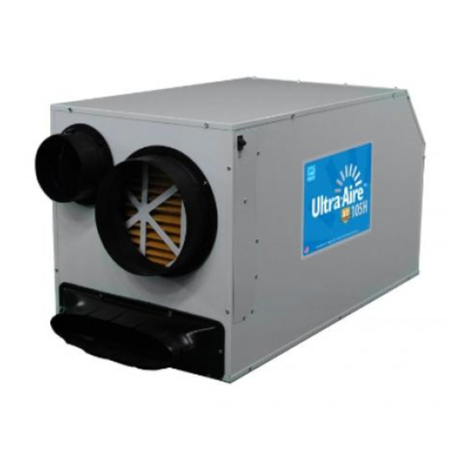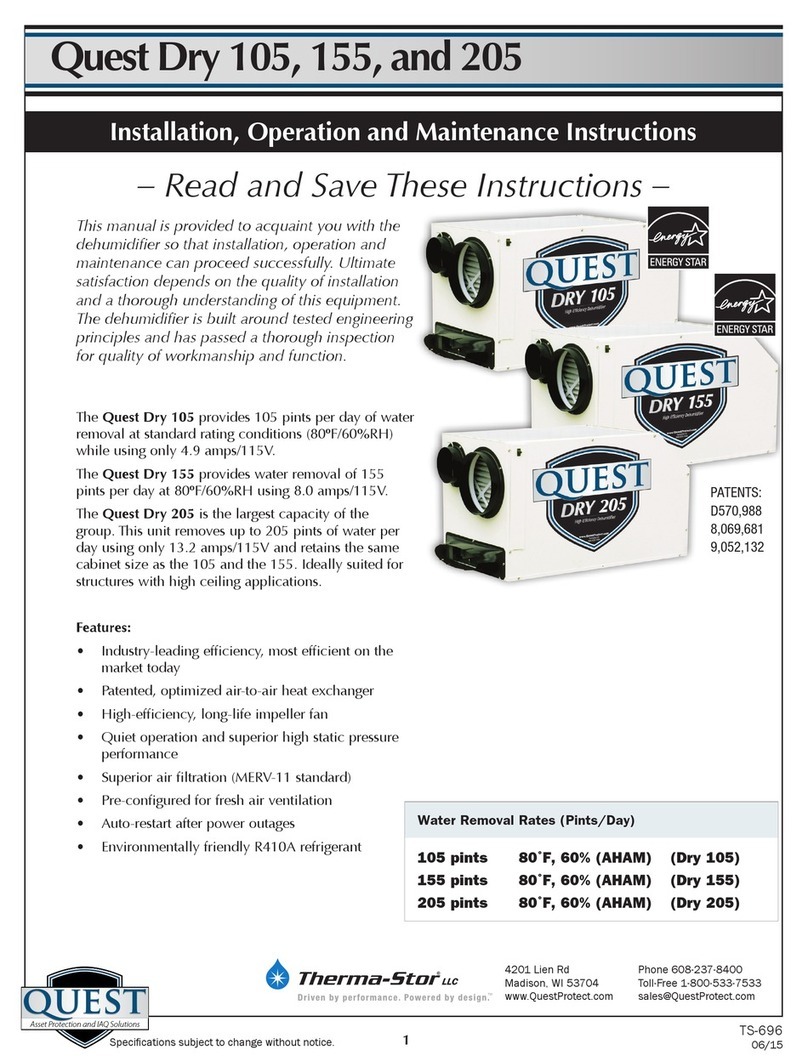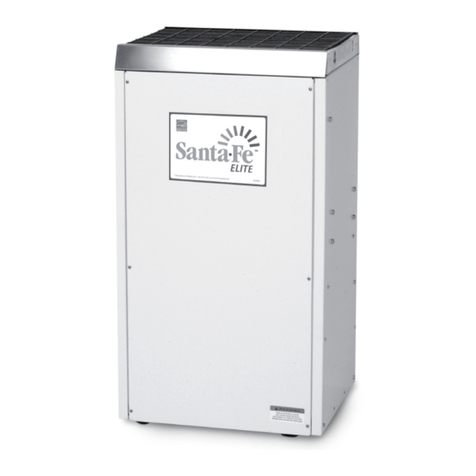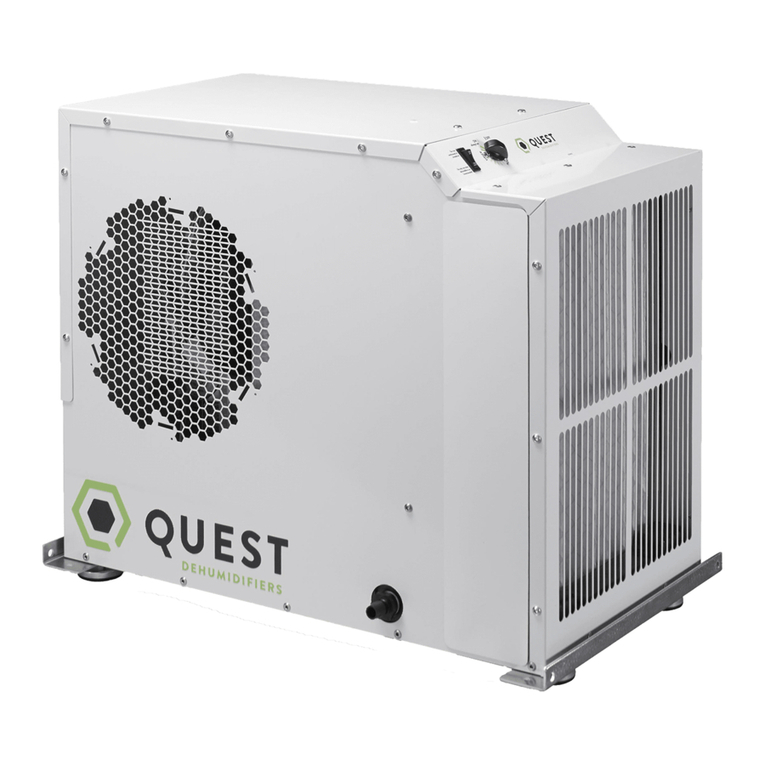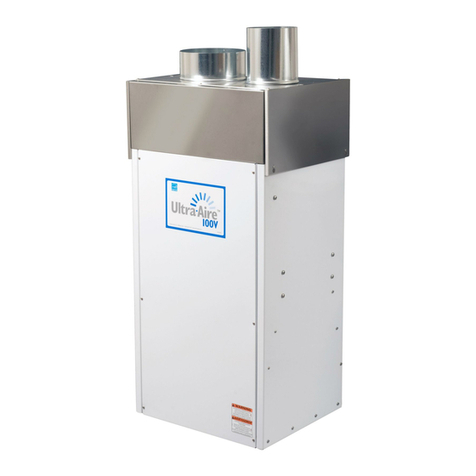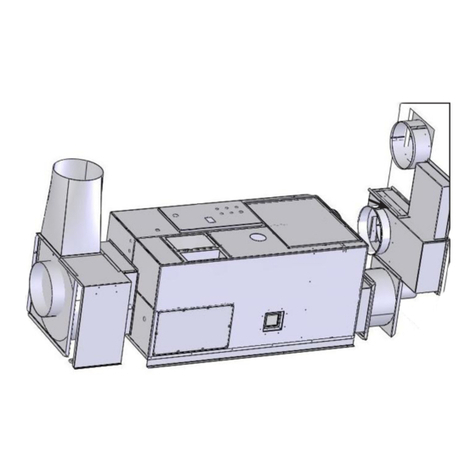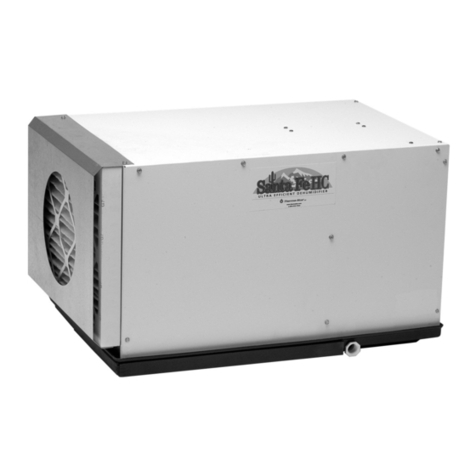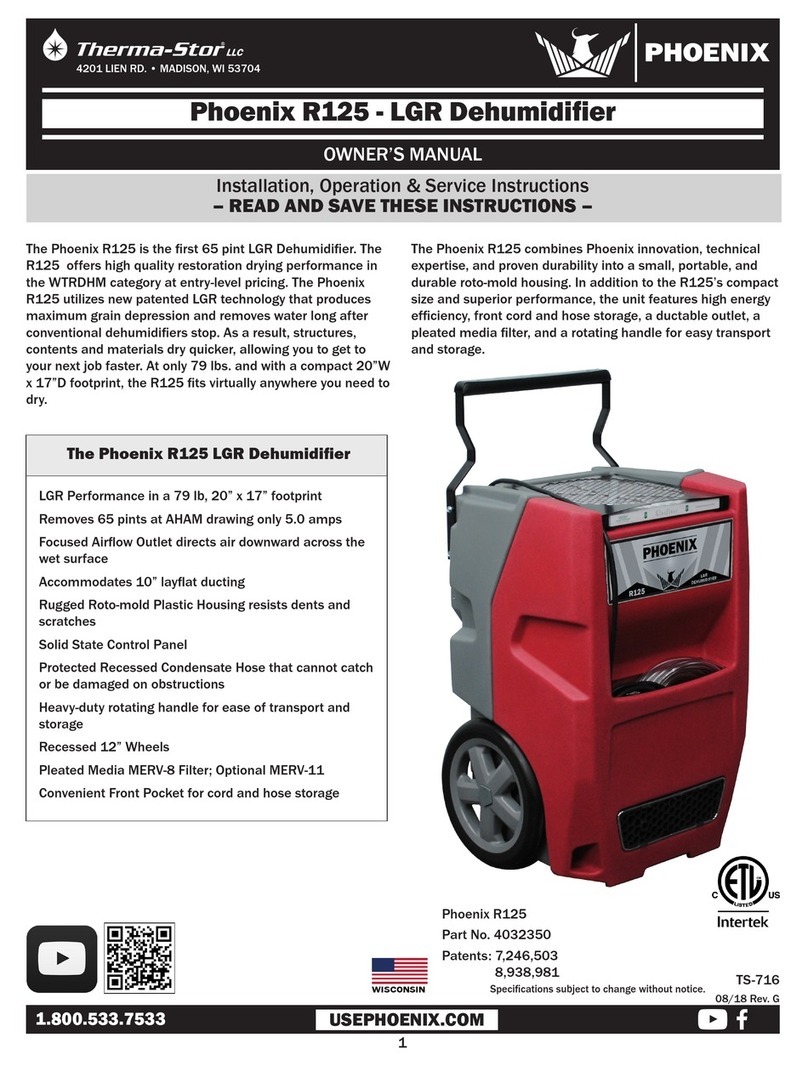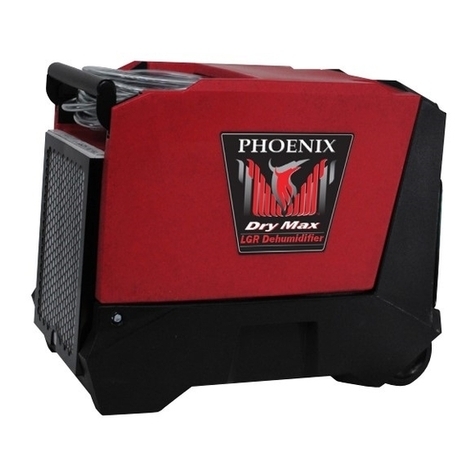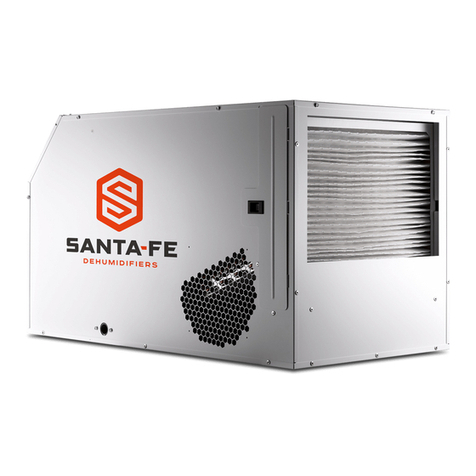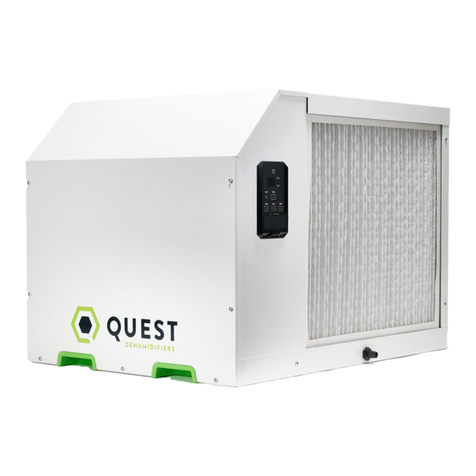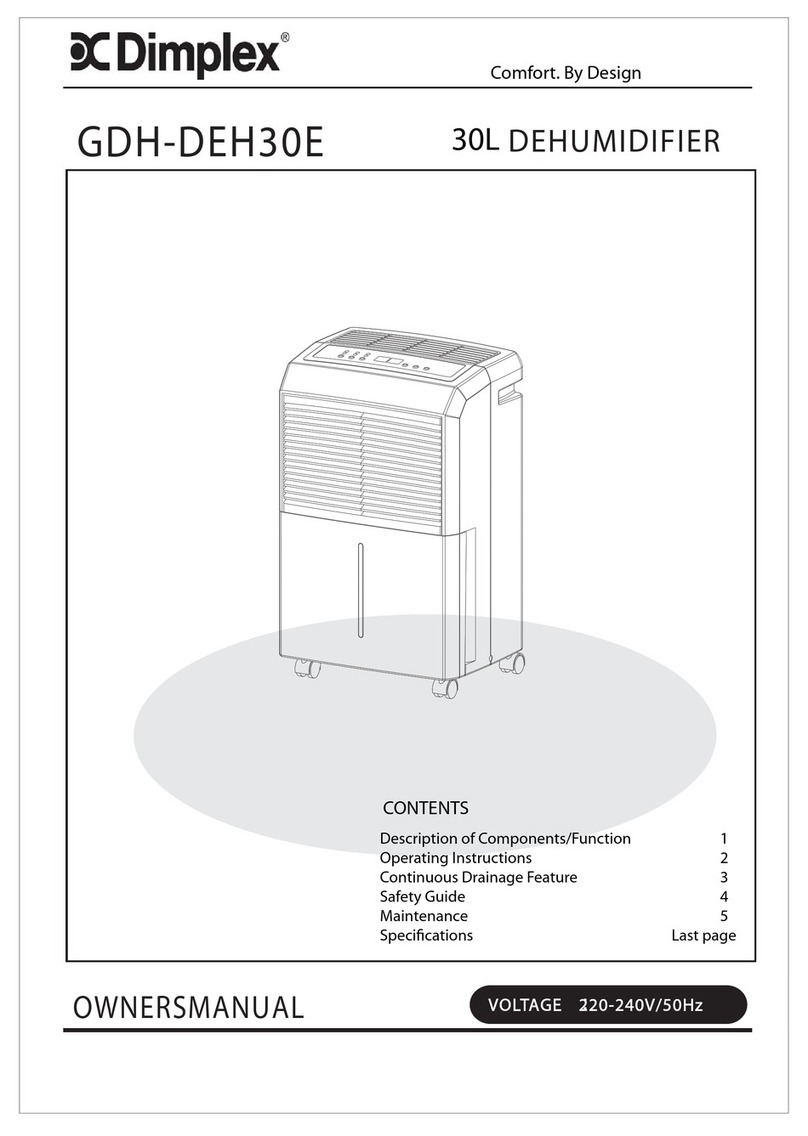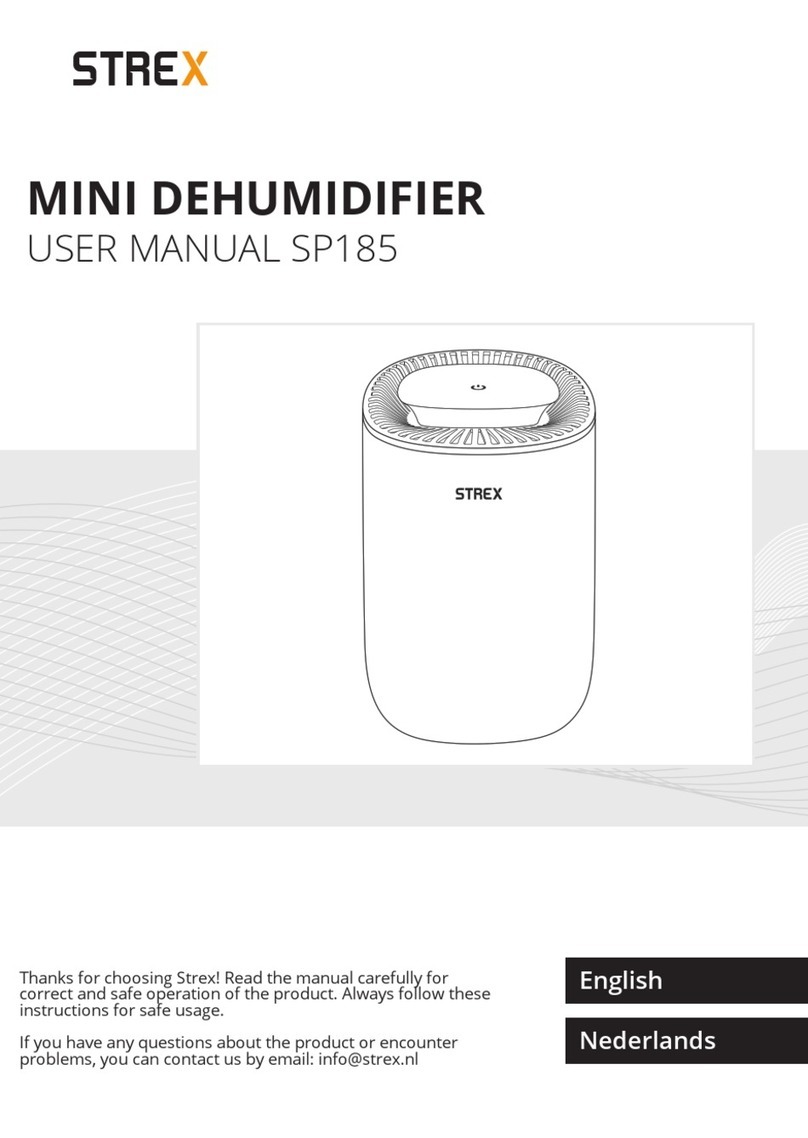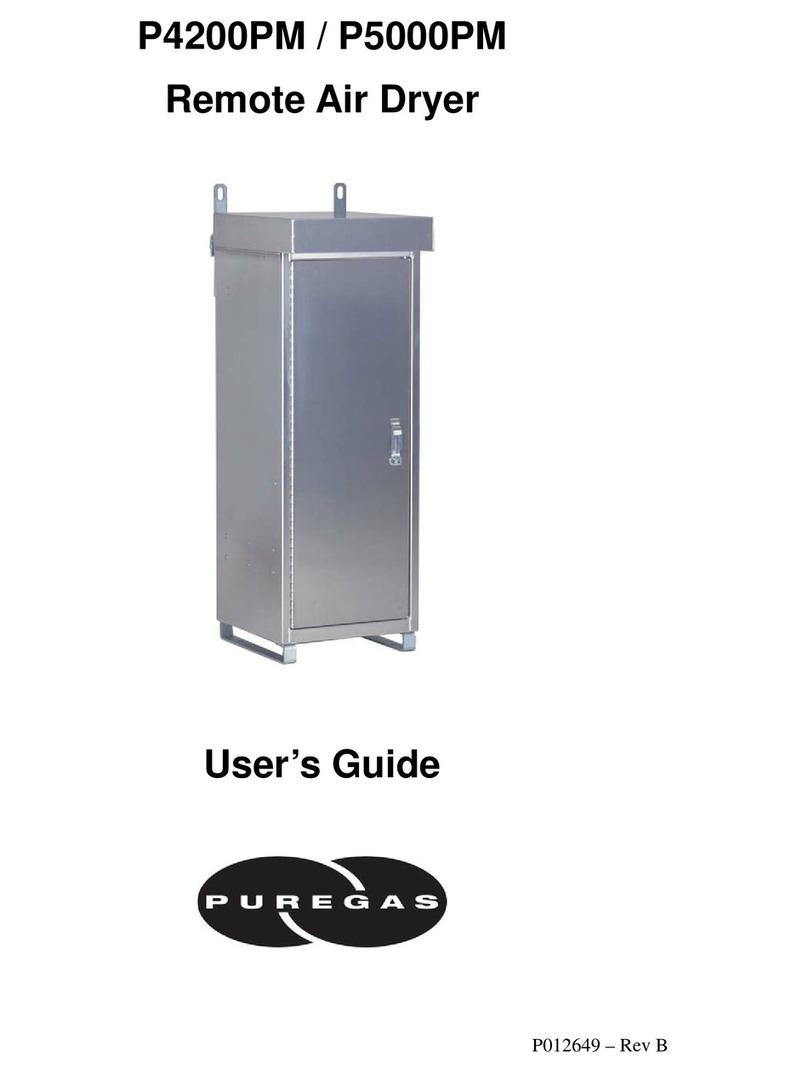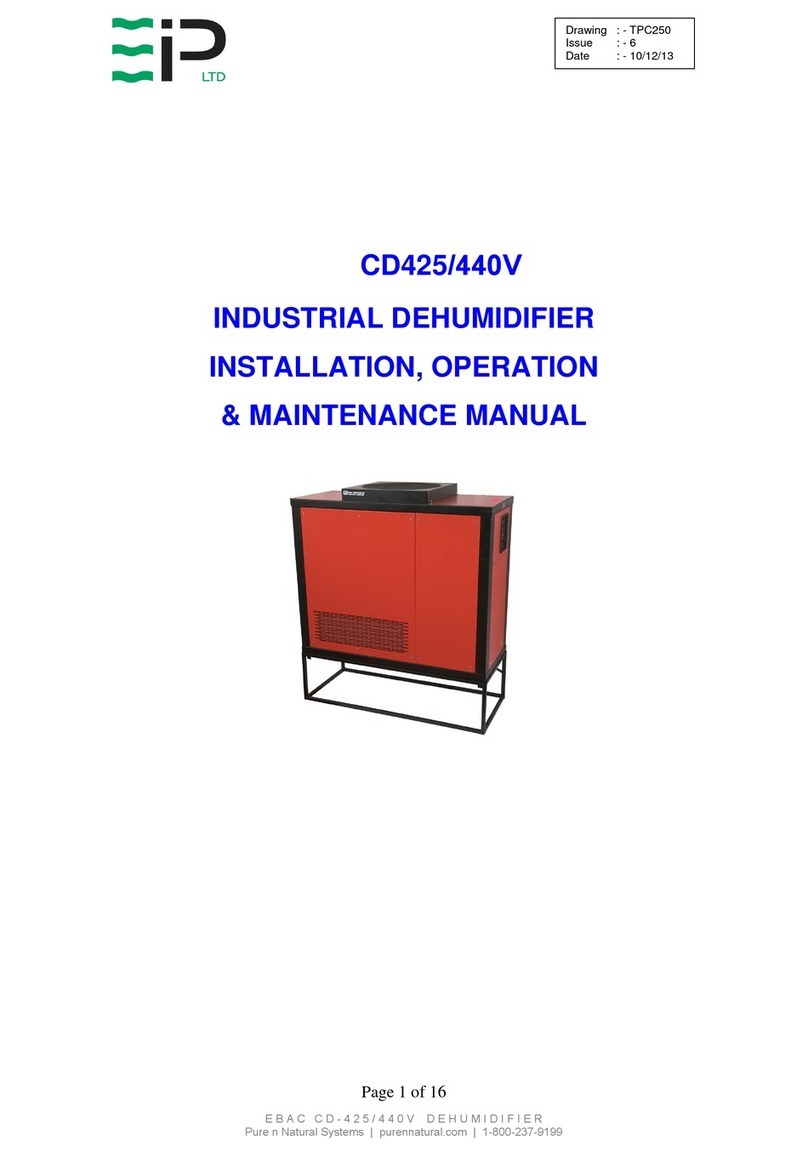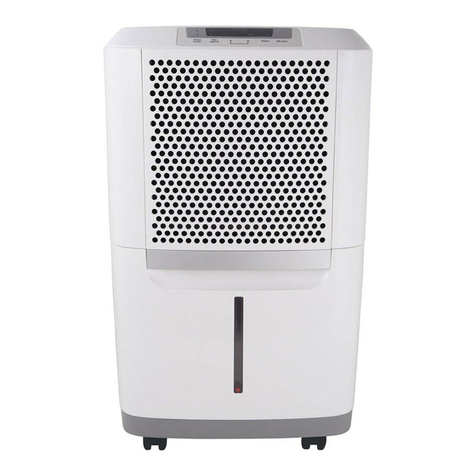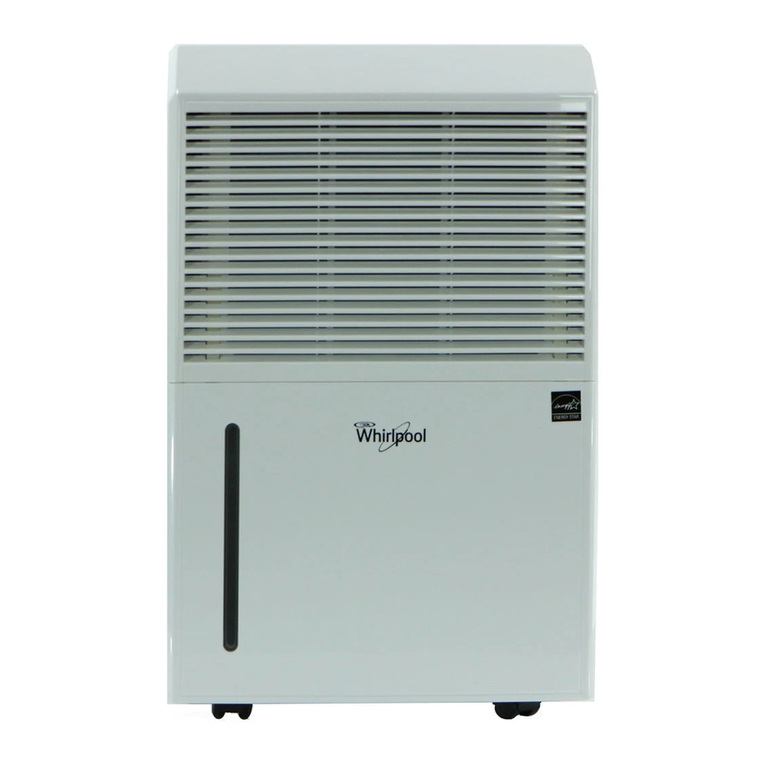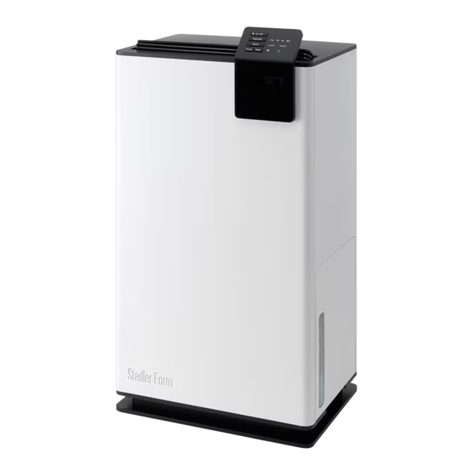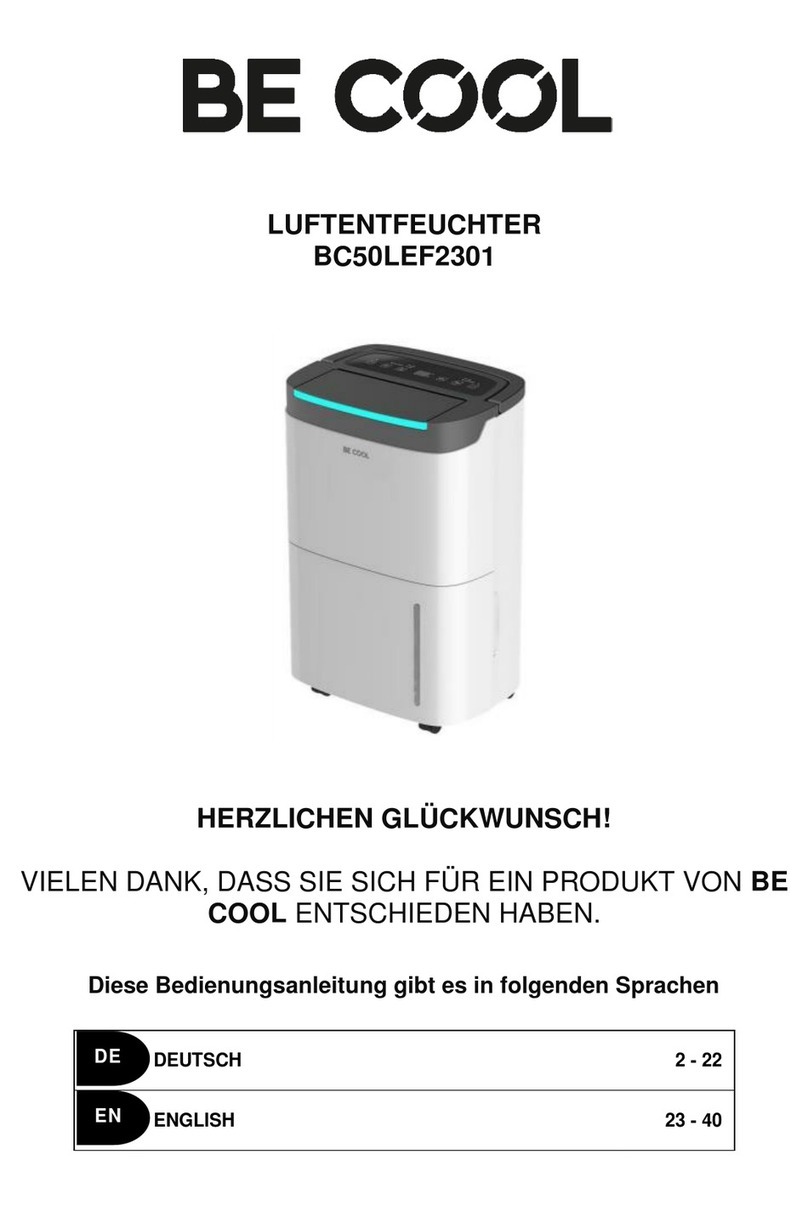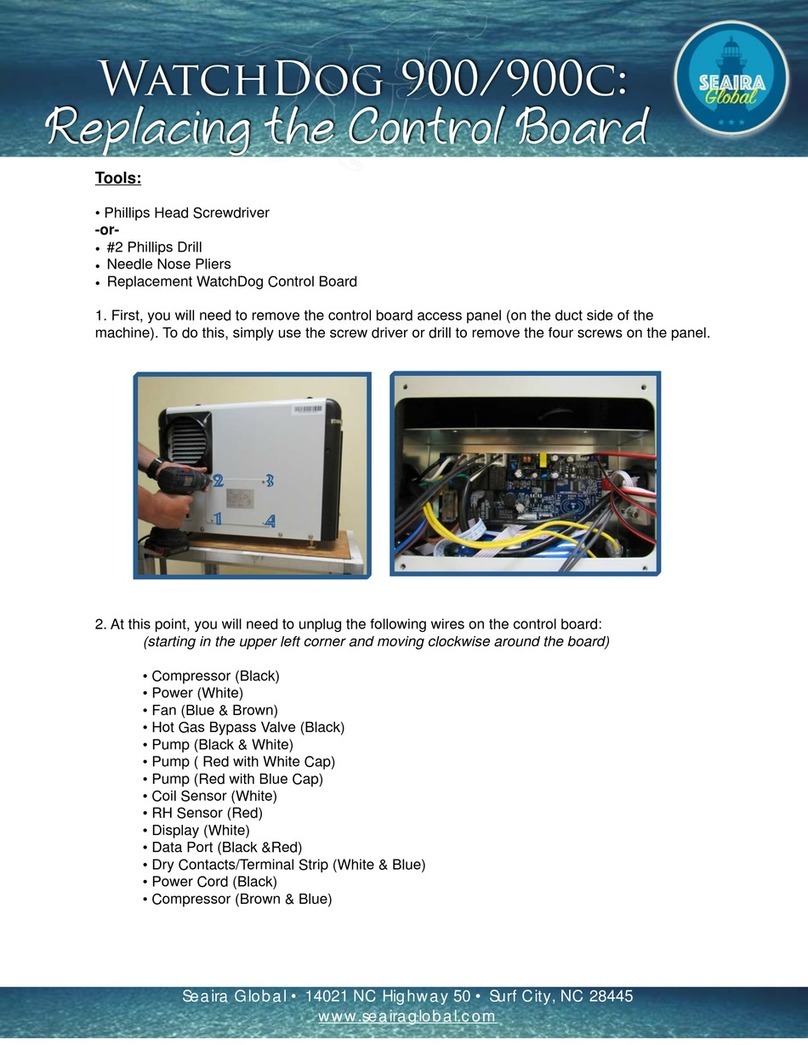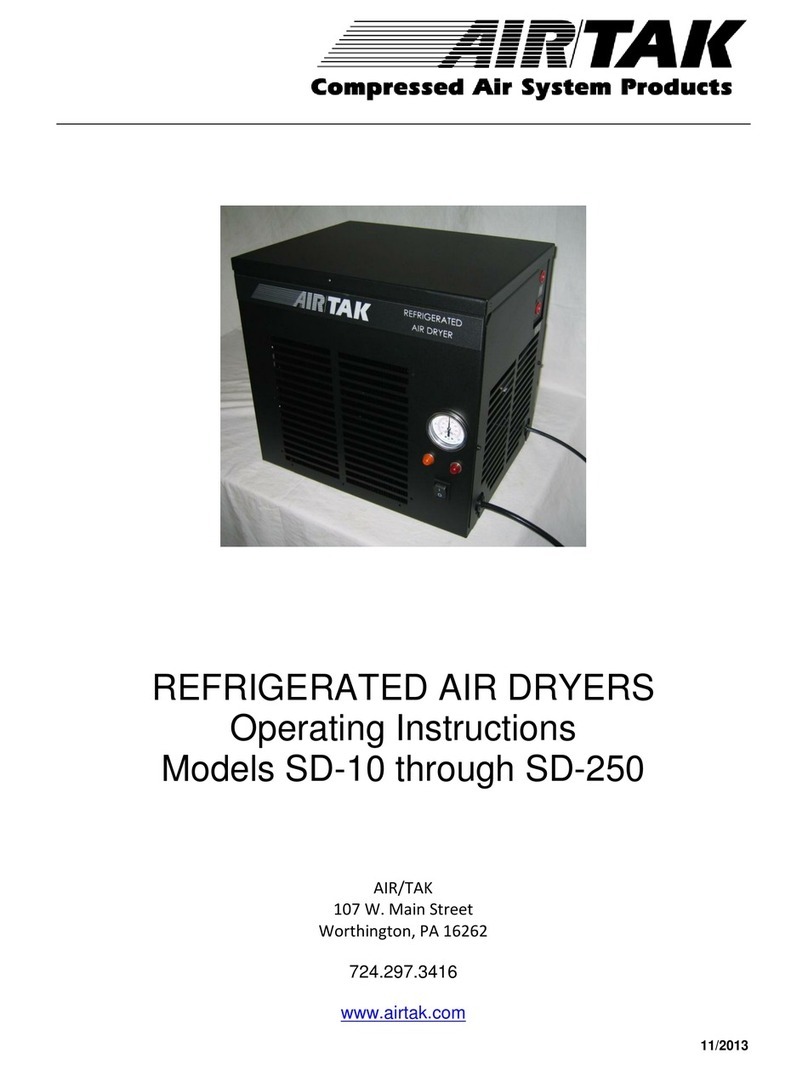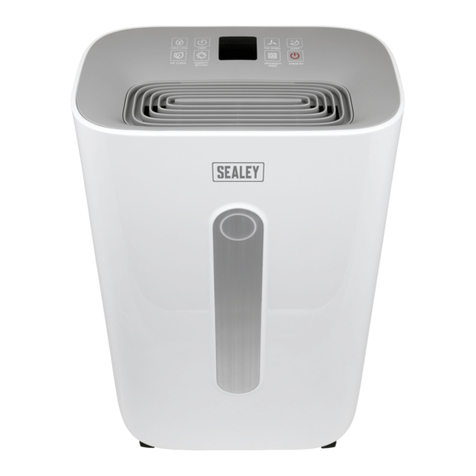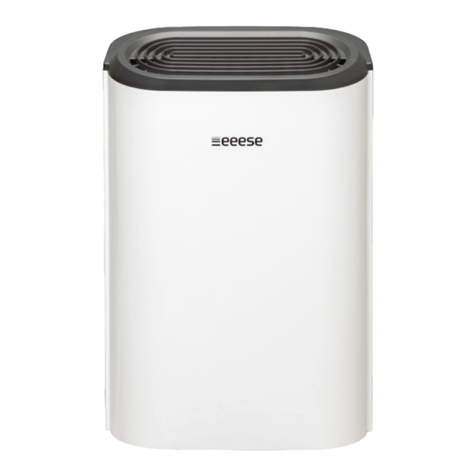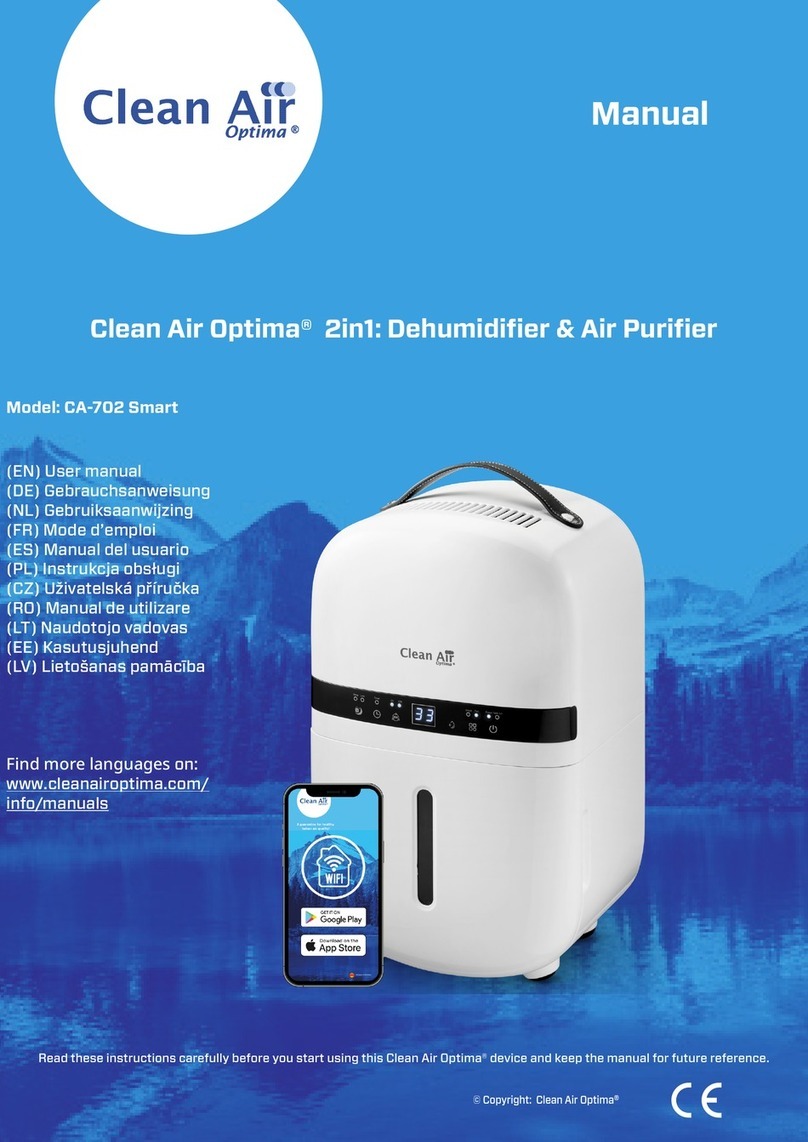
3
2.3 Electrical Requirements
The Phoenix 270HTx plugs into a common grounded outlet
on a 15 Amp circuit. It draws 8.9 Amps at 80°F, 60% RH.
If used in a wet area, a ground fault interrupter (GFI) is
required.
If an extension cord is required, it must have a minimum of
14 gauge conductors if 25 feet long or less and 12 gauge
conductors if greater than 25 feet long.
2.4 Condensate Removal
The Phoenix 270HTx is equipped with an internal
condensate pump to remove the water that is condensed
during dehumidication. This allows the condensate to be
pumped 30’ with the attached hose. If the condensate must
be pumped more than 20 feet above the unit, a second
pump must be added to relay the condensate. If the pump
fails and the unit must be used before it can be replaced,
the condensate can be drained by gravity (see Sec. 4.9).
2.5 Ducting
A detachable rectangular exhaust collar is supplied that will
allow 10” round lay-at duct to be attached to the Phoenix
270HTx outlet.
To attach ducting to a collar, put the plastic duct end
through the collar center and roll the duct end outward so
that it overlaps the outside of the collar. The duct and collar
may then be quickly attached to the Phoenix 270HTx by
snapping the collar over the four screws at the blower outlet.
2.6 Power Button
Press the POWER button to turn the dehumidier on or off.
When starting the dehumidier the display will show the
accumulated hours. Press the POWER button again to turn
the dehumidier off. The display will also power off.
2.7 Pump Purge Button
During normal operation the pump automatically cycles
every four minutes. Press the PURGE button to remove
condensate manually from the reservoir. There are several
ways to manually remove water from the reservoir:
1. Press the PURGE button once and the pump will run for
20 seconds
2. Press and hold the PURGE button and the pump will run
for up to 30 seconds
3. Press the PURGE button while the dehumidier is
powered off and the pump will run for 30 seconds.
Always manually purge the water reservoir before transport
or storage. Turn off the power and allow the plugged in de-
humidier to rest 15 minutes before the nal purge.
2.8 Hour Meter
The digital hour meter displays the amount of time the
dehumidier has been turned on to the tenth of an hour. The
hour meter continuously cycles between total machine hours
and job hours every 3 seconds. Hours are stored in memory
even when the unit is unplugged. The previous totals will be
displayed next time the unit is powered on.
2.9 HOURS Button
Pressing the HOURS button displays the hour meter when
the unit is turned off but plugged into power. To reset job
hours, press and hold the HOURS button for 5 seconds
when the unit is operating.
2.10 DEFROST Light
The DEFROST light turns on when the unit is in defrost mode
indicating when the compressor is off.
DRYING TIP: Air’s ability to absorb moisture from wet
surroundings and the Phoenix 270HTx’s ability to remove
moisture from that air is greatly improved at higher
temperatures. We recommend that the area to be dried be
heated to over 70°F if possible. Less drying time will be
required and efficiency will improve.
2.11 Low Pressure Protection
If the low side refrigerant drops into a low pressure situation
that may harm the compressor, the solid state controls will
sense the refrigerant conditions and shut off the compressor
until the system automatically resets itself.
The solid state control monitors and compares the ambient
temperature and refrigerant conditions to ensure the system
is protecting compressor at all times. The control protects
the compressor from damage by monitoring cycles, pres-
sures, and system performance.
2.12 Defrost Cycle
If the evaporator coil temperature drops below the defrost
set point, due to excessive frost formation on the coil, the
thermistor activates the solid state control and the defrost
light. The control cycles the compressor “off” and “on”
by monitoring thermistor temperature. The air mover will
continue to run, causing air to ow through the evaporator
coil. The air will melt the ice that formed on the evaporator.
When the coil temperature increases, the thermistor will end
the defrost cycle restarting the compressor.









